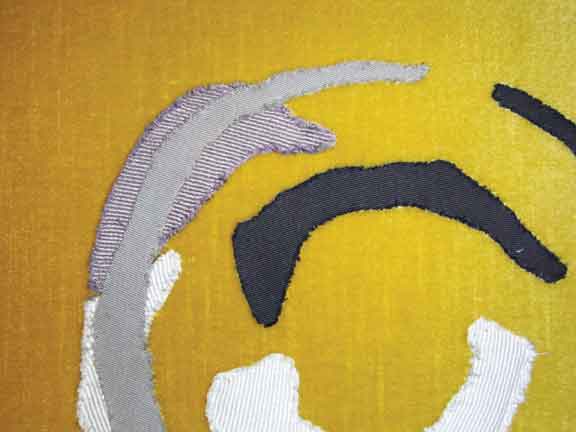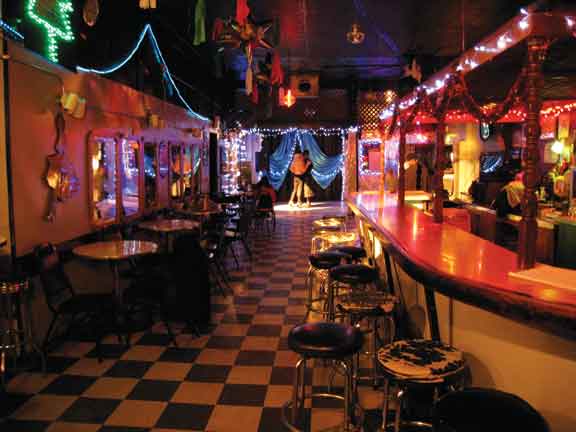« Reviews
Whitney Biennial 2012

Andrew Masullo (b. 1957). 5030, 2008–10. Oil on canvas, 24 x 30 inches. Collection of the artist. © Andrew Masullo; courtesy Daniel Weinberg Gallery, Los Angeles
Whitney Museum of American Art - New York
The First Rule of the Biennial is You Don‘t Talk About the Biennial
By Stephen Truax
It’s impossible to write a straight review of the 2012 Whitney Biennial when it is being actively picketed. One must consider the political/economic context that may occlude any effective discourse or artistic offering made from within the institution. This is, unfortunately, the state of most things in contemporary American life: How does one go to the ATM without thinking about the global bank default? How does one pursue a higher education without considering the looming threat of a student-loan debt crisis? How can artists today-or really, anyone-make their labors compensable without contributing to the plutocracy that is the American status quo?
A boycott has been called against the Whitney. Arts & Labor, a working group of Occupy Wall Street’s Arts & Culture Committee, has released a public letter to the Whitney demanding it end the Biennial in 2014. Occupy Wall Street (OWS) has called upon the Museum to drop sponsorship from Deutsche Bank and Sotheby’s. Sotheby’s has been in an ongoing dispute with its unionized art handlers who were locked out in November 2011 when they demanded higher pay. In a YouTube video, Diana Taylor (partner of New York Mayor Michael Bloomberg), a member of the Sotheby’s board, publicly declared that she would resign if Sotheby’s accedes to any of the art handlers’ demands at a meeting of the Hudson River Park Trust (of which she is chair)(Vartanian). Furthermore, in December 2011, Sotheby’s (NYSE: BID) reported its highest annual profit since 2007: $171.4 million (Boroff). Thus, OWS protesters have staged multiple demonstrations in conjunction with the Biennial, including one at the VIP Opening Reception.
The groundswell of grassroots political activity, especially here in New York, is impossible to ignore. Since the Arab Spring in 2011, protests have sprung up and largely continued consistently around the world in a broad array of countries, including the U.S., U.K., Lybia, Syria and recently across China1 and Russia (Barry and Schwirtz). As the Biennial is charged with reflecting or describing the current cultural context in America, it must address the change that is at hand.
Andrea Fraser has once again taken center stage, however this time with her essay, “L’1%, C’est Moi,” written for the Berlin-based publication Texte Zur Kunst. Throughout the article, the artist argues that the price of art does not rise based on the volume of the whole economy; instead, the price of art rises when income inequality increases (Fraser). She also makes clear the disturbing ties between major art institutions’ board members and massive global corporations, especially regarding the profits many personally saw after the financial meltdown. Fraser exhibits the “work” in the Biennial as a book standing on a pedestal.

Nick Mauss, Material Studies, 2008-11 (detail), digital photographs, dimensions variable. Image courtesy of the artist, 303 Gallery (New York) and Galerie Neu (Berlin)
Another circumstance makes this 2012 Biennial unique, as two neighboring exhibitions in New York designed to directly compete with it are concurrently on view: the New Museum’s Triennial, “The Ungovernables,” and the Bruce High Quality Foundation’s Brucennial. The Biennial, despite showing largely emerging or mid-career artists, is being railed against by underdog artists, curators and institutions as “the establishment,” which leads us to an interesting question: As the widely accepted establishment, how can a critique of the establishment be effectively launched from the Whitney?
Curators Elisabeth Sussman and Jay Sanders have been planning this exhibition since December 2010. The touchstone of the 2012 Whitney Biennial curatorial project is human touch. Throughout the exhibition we see handmade painting and sculpture, hand-painted details throughout installations, and a makeshift, DIY aesthetic. This Biennial more than any other deals with history and the anxiety of influence from Modernism (and even earlier). It is actually difficult to discern which works are historical and which are contemporary. The curators underscore the imperative of analyzing the relationship between all analogous creative disciplines’ impact on visual art by turning the Biennial into a platform for performance, including a rock concert, dance performances, theater productions, an avant-garde cinema, a publication platform, etc., all free with the cost of entry. It is literally impossible to sum up the efforts and intentions of the curators in this short review.
The underrepresented painter Forrest Bess’ (American, 1911-1977) sincere abstractions in unfinished wooden frames bear striking similarities to contemporary motifs, including provisional painting, recalling the Pre-War period, Arthur Dove, et al. The small solo was actually curated by artist Robert Gober, who helped ensure that Bess would realize his dream postmortem: that his paintings be displayed alongside ephemera that includes photographs of his self-inflicted surgery on his genitals to become simultaneously man and woman.
Andrew Masullo’s idiosyncratic, small, colorful abstract paintings (a sort of Mary Heilmann meets Thomas Nozkowski) installed playfully not following a center line seem to be looking back to the same art historical moment in the early 19th century as Bess. Hand-painted, brightly colored cement/clay sculptures by Vincent Fecteau (presented on classic pedestals) also recall early Modernism. The handmade theme extends through multiple media, including Luther Price’s Handmade Slides, 1999-ongoing, a slide carousel set to automatically click through a series of hand-distressed film slides, simultaneously competing with contemporary painting while employing antiquated technology.

Wu Tsang, Production still from WILDNESS, 2012 (in progress), high-definition video, color, sound. © Wu Tsang. Courtesy of the artist.
A more prescient take on painting is Nicole Eisenman’s paintings and lithographs, which depict dysphoric interaction with contemporary technology in a lighthearted, colorful style. Breakup, 2011, shows a sad sort of cartoony face staring down into a Smartphone in horror/disbelief/despair. She makes us emotionally invest in her characters and take her paintings seriously, primarily by how convincingly they are painted, with all the bravado of thick, sexy oil paint and the subtle colors of a Bonnard. Eisenman is also opening up the remote practice of painting the public by hosting a public figure-drawing class of live models in the Museum’s galleries.
The curators explore how sculpture can be a useful foil to the historically laden tradition of painting, with Cameron Crawford’s large works, which include painted canvas, stretcher bars and other endemic materials of traditional painting, deconstructed and represented as sculpture. Elaine Reichek’s large digital embroidery on linen textile paintings are not to be overlooked as a plausible solution, either.
The allotment of space at the Biennial is disproportionate: Most of the fourth floor has been dedicated to blinding white theater seating and a massive stage. For the first time-I think-ever, you can see out the Breuer Building’s rhrombus-shaped windows. Sculptor Michael E. Smith cleverly positioned one of his untitled styrofoam-looking sculptures in front of one of them to bask in the oblong sunlight.
A woman wearing a horse mask and a brown leotard walks aimlessly around her “pen,” while another girl mops and sweeps the floor after her. A huge neon wall sign of a wiggly drawing of a girl’s face gleams down in aqua blue. Philip Glass-like melodic tonal music plays loudly. In a dressing room around the corner, several performers prepare for the performance. It is not difficult to imagine a casual museum-goer approaching Sarah Michelson’s Devotion Study #1-The American Dancer, 2012, and saying, “What the f&#*…?”
A whole series of dressing rooms are on the back side of the “stage,” the most memorable being Wu Tsang’s GREEN ROOM, 2012, which transforms his small booth into the back room of a gay bar in L.A., and shows a video of a drag queen performing in front of a live audience. It is extremely convincing, right down to the smell.
The Biennial offers a few works of true excellence, typically more conceptual than process-based, including Werner Herzog’s hilarious contribution of opera-like music by Ernst Reijseger paired with rotating images of etchings by the Dutch landscape painter and printmaker Hercules Seghers (c. 1589-c. 1638) in a multichannel video. The work is simultaneously sincere and insouciant: People leave truly touched or snarkily laughing along with Herzog.

Sarah Michelson Devotion Study #1—The American Dancer, February 26, 2012 at 2012 Whitney Biennial, Photograph © Paula Court.
Similarly positioned between the authentic and the contrived is 31-year-old Nick Mauss’ obtuse selection of work from the Whitney’s permanent collection-including a very strange Marsden Hartley painting-inside a custom-built antechamber. Mauss worked with a theater designer to construct a unique architecture out of stretched velvet that’s appliqued with cut pieces of velvet that appear to be hand-painted architectural details of a Beaux-Arts building. This complex work is inspired by the antechamber designed for Guerlain by artist/designer Christian Bérard. This was the most telling piece of the curatorial vision behind the Biennial, touching on all points: the handmade, the intersection of contemporary art with early Modernism, and a unique context in which the viewer is invited to have an experience.
While the Whitney Biennial list is once more filled with all relatively unknown artists, the art has been eclipsed by the political milieu surrounding it. Despite the innovative new platforms Sussman and Sanders have contrived to reinvigorate this 80-year-old tradition, it seems more like a desperate cry than a solution to the systemic problems the Whitney Museum of American Art, and, of course, all other major art institutions in the U.S., now face. The first rule of the 2012 Whitney Biennial is you don’t talk about the Biennial.
(March 1 - May 27, 2012)
WORKS CITED
• Barry, Ellen and Michael Schwirtz. “After Election, Putin Faces Challenges to Legitimacy.” The New York Times. March 5, 2012.
• Boroff, Philip. “Sotheby’s Falls After Auction Revenue Drops” Bloomberg News. March 1, 2012.
• Fraser, Andrea. “L’1%, C’est Moi.” Texte zur Kunst Issue no. 85, “Art History Revisited.” March 2012.
• Vartanian, Hrag. “Girlfriend of NY Mayor Tells Sotheby’s Art Handlers to Eat Cake.” Hyperallergic. December 3, 2011.
NOTES
1. See, “Unrest in China: A Dangerous Year.” The Economist. January 28, 2012.
Stephen Truax is an artist, writer and independent curator based in Brooklyn.
Filed Under: Reviews


































